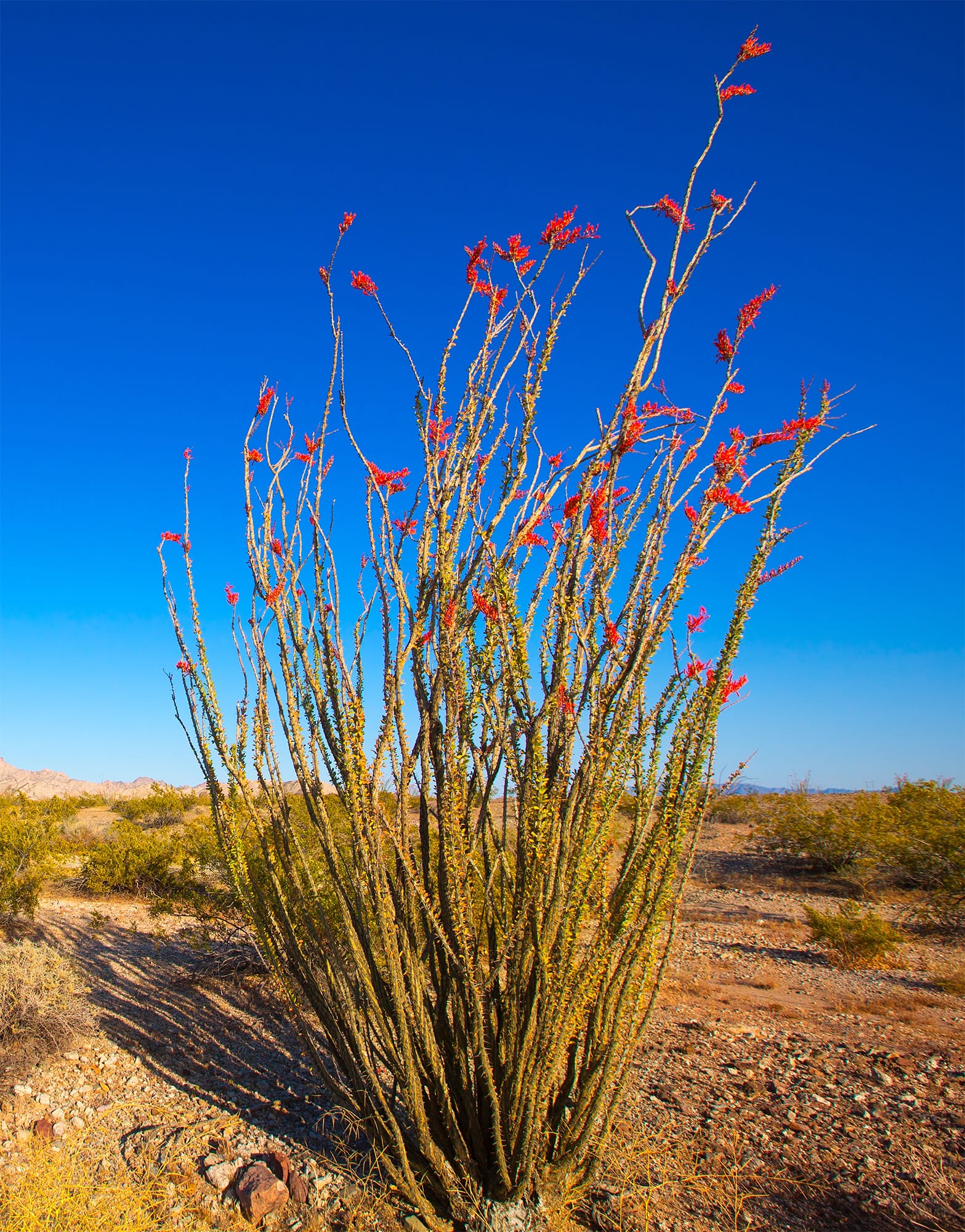In the July/August edition of Desert Health, I wrote about one of the impressive plants native to the Southwestern United States, Larrea tridentata (aka creosote bush). In this edition, I’m going to discuss yet another plant that is not only native to the South-Southwest, but also exclusive to it.
Fouquieria splendens (aka ocotillo) is a unique plant integrated into landscaping designs of the valley and can be easily seen in the wild while driving Route 74. Although it’s technically a shrub, it isn’t how you’d standardly picture shrub with each of its stems shooting up from one singular base. It does not branch, has no trunk and can reach heights recorded up to 30 feet. Each stem is covered with sharp spines, which are technically modified leaves (fun fact). After rain, the stems are covered from top to bottom with small green leaves just long enough to camouflage its sharp spines which are only a few centimeters long. The straight, tall stems with spines have been used traditionally as living fences or walls. The stems have also been used for fiber and building material. It prefers rocky, arid, well-drained soil and their typical lifespan is around 60 years.
March to June is when ocotillo blooms vibrant scarlet red flowers on the tip of each branch. It may also bloom after rain. Because of this presentation, it is also called desert candlewood, flaming sword, wolf’s candle and candle flower. Ocotillo actually means “little torch” in Spanish.
This unique plant provides shelter for spiders and insects and nectar for hummingbirds and bees. While it is not a major food source for desert animals, it is found in areas grazed by mule, white-tail deer and desert bighorn sheep.
Medicinally, ocotillo has significant value. Historically, it has been used to treat wounds and swelling from injuries and the tea of its flower for cough medicine. Modern day herbalists use it as a lymphagogue, a compound that works to support the lymphatic system. What is unique about ocotillo is that is has a specificity to lymph in the pelvic region. It can aid in clearing pelvic lymph congestion and stagnation and has been used in conditions of the pelvis, such as urinary tract infections, cystitis, pelvic inflammatory disease and benign prostate. However, scientific research is limited at this time.
Ocotillo is a slow-growing shrub found only sparsely throughout the Southwest. As habitants of this area, it is our responsibility to make sure it is protected, whether in our landscaping or in the wild. As with most substances, improper use of plants can cause ill effects. It is my hope that the next time you see ocotillo shooting up from the earth, you will see it in new light and wonderment, appreciating it for all it provides and all we have yet to learn.
Dr. Shari Jainuddin is a naturopathic primary care doctor at One Life Naturopathic and also offers biofeedback training and craniosacral therapy. This article is intended to be informative and raise appreciation of the medicine that surrounds us and is not provided as medical advice. For more information, call (442) 256.5963 or visit www.onelifenaturopathic.org.
Sources available upon request.


















































Comments (0)